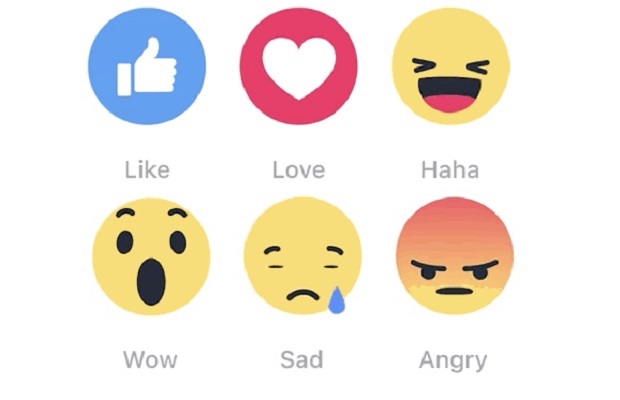Facebook’s new ‘Reactions’ button gives users six new ways to express their emotions- but advertisers are not able to differentiate between and ‘loved-up’ or ‘angry’ consumer on the social network for now. But once they can- how will they interpret these rather ambiguous emojis? We thought we’d take a look…
At launch, Facebook is not differentiating between the responses to determine a user’s interests when it places ads and other posts in a customer’s news feed.
All reactions will be counted as additional likes, meaning Facebook will assume that the user wants to see more similar content, even if the person responded with an “anger” emoticon.
Facebook said it would decide later how new reactions should be weighted to personalise news feeds.
So how might brands interpret the new Reactions emojis?
LIKE
The old emoji will remain- but with other emotions filtered out the metric could be taken as a more solid endorsement of a Facebook post, product or campaign.
LOVE
Perhaps the biggest prize of the social media world, this emoji could represent full engagement and loyaltyto a brand. People that express brand ‘love’ could be primed not only as long-term customers, but also crucial brand ambassadors to help ampify messages online.
HAHA
Another positive emoji (unless it relates to a particularly embarrassing event for the brand). This could largely be taken that any entertaining posts are hitting the mark- and could generate more shareable interest than any other ‘Reaction’. Funny content always does well on the web, and people are likely to be more interested in a ‘haha’ endorsement over a boring ‘like’.
WOW
Consumers seek spectacle online and this Reaction is likely to get the web buzzing. Most of the time this will be seen as a hugely positive endorsement for a brand (unless they are being sarcastic).
SAD
Perhaps the closest to the much sought after ‘dislike’ button- ‘sa’ is a handy way of supporting distressed online friends while avoiding awkward ‘endorsements of their misery’. For brands this is one to largely avoid unless the ad is profoundly powerful (e.g. John Lewis Christmas ad).
ANGRY
This is perhaps the biggest threat to brands. Companies can’t block anger, just like they can’t block any of the other reactions. Previously, there was no simple way to criticise a brand (users would have to write a negative comment). The concern here is that a post might get a number of negative reactions, but no real opportunities for a brand to respond in a way that will resolve the issue.
Here’s a list of what Reactions will mean for advertisers:
· Metrics that include Likes in ads reports will also include Reactions.
· However, these won’t be broken out as individual Reactions.
· Advertisers who want to see a breakdown of Reactions can do so in their Page insights only.
· Reactions are treated the same as Likes for ads delivery (ex: Loves carry no extra weight than Likes in the auction).
· In the same way that you can’t remove a Like, you can’t remove a Reaction.
